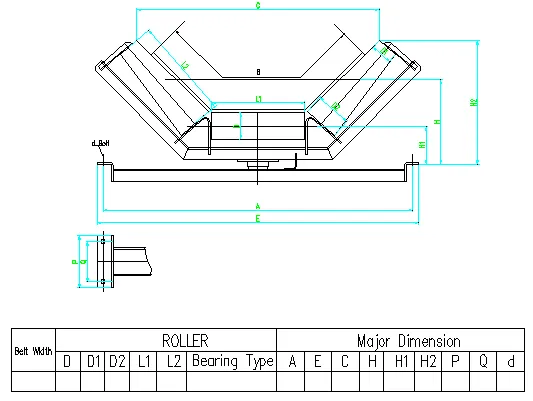 Afrikaans
Afrikaans  Albanian
Albanian  Amharic
Amharic  Arabic
Arabic  Armenian
Armenian  Azerbaijani
Azerbaijani  Basque
Basque  Belarusian
Belarusian  Bengali
Bengali  Bosnian
Bosnian  Bulgarian
Bulgarian  Catalan
Catalan  Cebuano
Cebuano  Corsican
Corsican  Croatian
Croatian  Czech
Czech  Danish
Danish  Dutch
Dutch  English
English  Esperanto
Esperanto  Estonian
Estonian  Finnish
Finnish  French
French  Frisian
Frisian  Galician
Galician  Georgian
Georgian  German
German  Greek
Greek  Gujarati
Gujarati  Haitian Creole
Haitian Creole  hausa
hausa  hawaiian
hawaiian  Hebrew
Hebrew  Hindi
Hindi  Miao
Miao  Hungarian
Hungarian  Icelandic
Icelandic  igbo
igbo  Indonesian
Indonesian  irish
irish  Italian
Italian  Japanese
Japanese  Javanese
Javanese  Kannada
Kannada  kazakh
kazakh  Khmer
Khmer  Rwandese
Rwandese  Korean
Korean  Kurdish
Kurdish  Kyrgyz
Kyrgyz  Lao
Lao  Latin
Latin  Latvian
Latvian  Lithuanian
Lithuanian  Luxembourgish
Luxembourgish  Macedonian
Macedonian  Malgashi
Malgashi  Malay
Malay  Malayalam
Malayalam  Maltese
Maltese  Maori
Maori  Marathi
Marathi  Mongolian
Mongolian  Myanmar
Myanmar  Nepali
Nepali  Norwegian
Norwegian  Norwegian
Norwegian  Occitan
Occitan  Pashto
Pashto  Persian
Persian  Polish
Polish  Portuguese
Portuguese  Punjabi
Punjabi  Romanian
Romanian  Russian
Russian  Samoan
Samoan  Scottish Gaelic
Scottish Gaelic  Serbian
Serbian  Sesotho
Sesotho  Shona
Shona  Sindhi
Sindhi  Sinhala
Sinhala  Slovak
Slovak  Slovenian
Slovenian  Somali
Somali  Spanish
Spanish  Sundanese
Sundanese  Swahili
Swahili  Swedish
Swedish  Tagalog
Tagalog  Tajik
Tajik  Tamil
Tamil  Tatar
Tatar  Telugu
Telugu  Thai
Thai  Turkish
Turkish  Turkmen
Turkmen  Ukrainian
Ukrainian  Urdu
Urdu  Uighur
Uighur  Uzbek
Uzbek  Vietnamese
Vietnamese  Welsh
Welsh  Bantu
Bantu  Yiddish
Yiddish  Yoruba
Yoruba  Zulu
Zulu belt drive idler
Understanding Belt Drive Idlers Functionality and Importance
Belt drive systems are integral to the operation of various mechanical devices, facilitating the transfer of power between different components. One critical element in these systems is the belt drive idler, which plays a significant role in enhancing the overall efficiency and functionality of the belt drive mechanism. This article will explore what belt drive idlers are, their working principles, types, applications, and their importance in various industries.
What is a Belt Drive Idler?
A belt drive idler is a pulley or wheel that redirects or guides the belt within a belt drive system. It is typically not driven by the motor but serves to maintain proper tension, alignment, and tracking of the belt. By adjusting the belt path, idlers help extend the lifespan of the belt and reduce the risk of wear and tear on other components connected to the drive system. Idlers can also be utilized to support the belt over long distances or around obstacles in the machinery setup.
Working Principles of Belt Drive Idlers
The main function of a belt drive idler is to provide support and maintain proper tension in the belt. This can be achieved through several mechanisms
1. Tension Stabilization Idlers help to maintain the necessary tension in the belt. Proper tension improves power transmission efficiency by minimizing slip and maximizing contact between the belt and the pulleys.
2. Realignment Idlers ensure that the belt remains aligned with the driving and driven pulleys. Misalignment can lead to increased wear on the belt and potential breakdowns, making idlers crucial for longevity.
3. Adjustable Tension Some idlers come with an adjustable tensioning mechanism, allowing operators to fine-tune the belt's tension during operation. This adaptability is essential in systems where load variations occur.
Types of Belt Drive Idlers
There are several types of idlers, categorized based on their design and function
1. Fixed Idlers These are stationary pulleys that do not move or change position. They are used primarily for guiding the belt.
2. Adjustable Idlers These types can be repositioned to modify the tension and alignment of the belt based on operational needs.
3. Spring-loaded Idlers These idlers automatically adjust the tension via a spring mechanism, eliminating the need for manual tension adjustments.
belt drive idler

4. Tension Idlers Specifically designed to maintain adequate tension, these are usually spring-loaded to accommodate variations in load.
Applications of Belt Drive Idlers
Belt drive idlers are found in a wide range of applications across various industries. Some common applications include
- Manufacturing Equipment Belt drive systems are prevalent in conveyor belts, where idlers guide and tension the belts moving products through various stages of production.
- Automotive Engines In vehicles, belt drive idlers are essential in the serpentine belt systems that drive accessories like the alternator, water pump, and air conditioning compressor.
- Agricultural Machinery Tractors and other agricultural equipment use belt drive idlers to ensure that various components operate smoothly and effectively under different load conditions.
- Mining and Construction Heavy machinery, such as excavators and haul trucks, rely on belt drive systems with idlers to transport materials and maintain operational efficiency.
Importance of Belt Drive Idlers
The significance of belt drive idlers cannot be overstated. By ensuring optimal belt tension and alignment, idlers contribute to
1. Extended Equipment Life Properly tensioned and aligned belts experience less wear and tear, resulting in longer service lives for both belts and other associated components.
2. Enhanced Performance With the right idler configuration, power transmission becomes more efficient, minimizing energy loss and improving overall performance.
3. Reduced Maintenance Costs By preventing premature failure and minimizing breakdowns, idlers help reduce maintenance and replacement costs over time.
4. Operational Reliability In critical systems, the reliability provided by idler mechanisms ensures uninterrupted operation, which is vital for industries where downtime can lead to significant losses.
In conclusion, belt drive idlers are a seemingly small yet essential component of belt drive systems, playing a crucial role in ensuring smooth, efficient, and reliable operation across various industries. Understanding their functionality and importance helps in recognizing (and addressing) potential issues related to belt-driven machinery, ultimately contributing to operational success.
-
Revolutionizing Conveyor Reliability with Advanced Rubber Lagging PulleysNewsJul.22,2025
-
Powering Precision and Durability with Expert Manufacturers of Conveyor ComponentsNewsJul.22,2025
-
Optimizing Conveyor Systems with Advanced Conveyor AccessoriesNewsJul.22,2025
-
Maximize Conveyor Efficiency with Quality Conveyor Idler PulleysNewsJul.22,2025
-
Future-Proof Your Conveyor System with High-Performance Polyurethane RollerNewsJul.22,2025
-
Driving Efficiency Forward with Quality Idlers and RollersNewsJul.22,2025





























